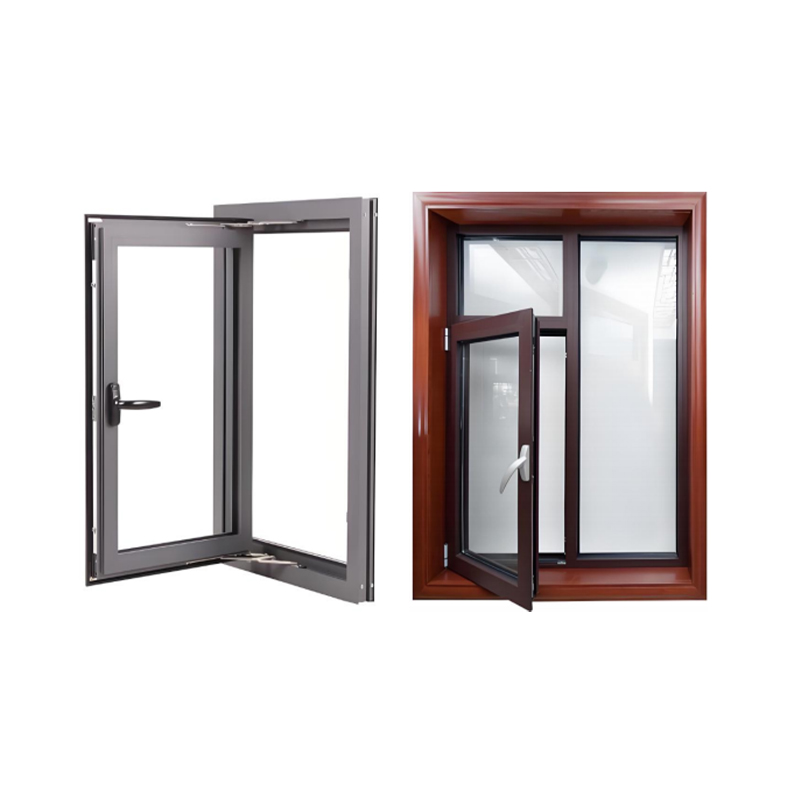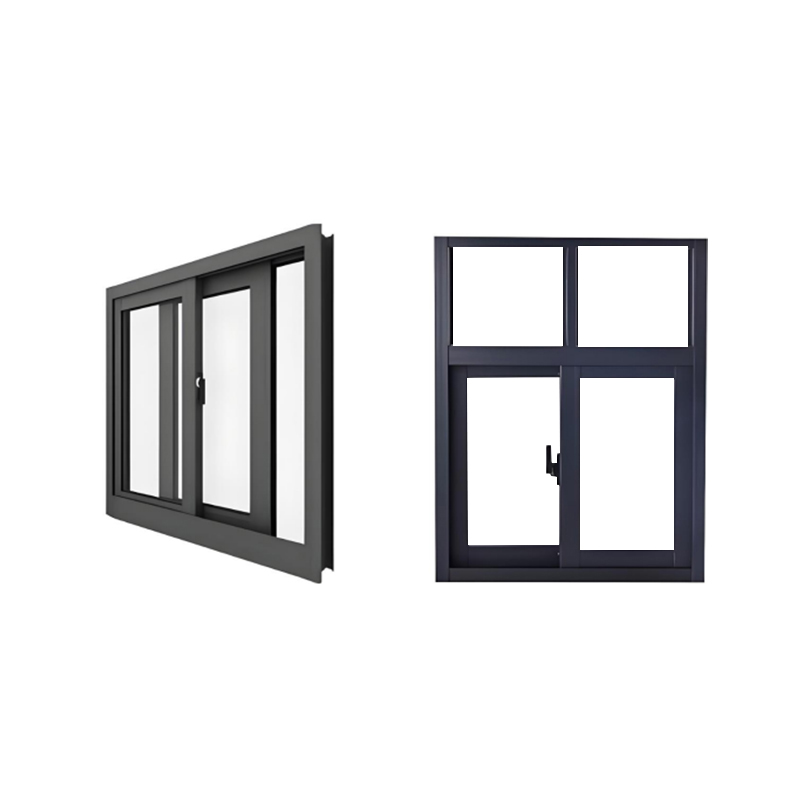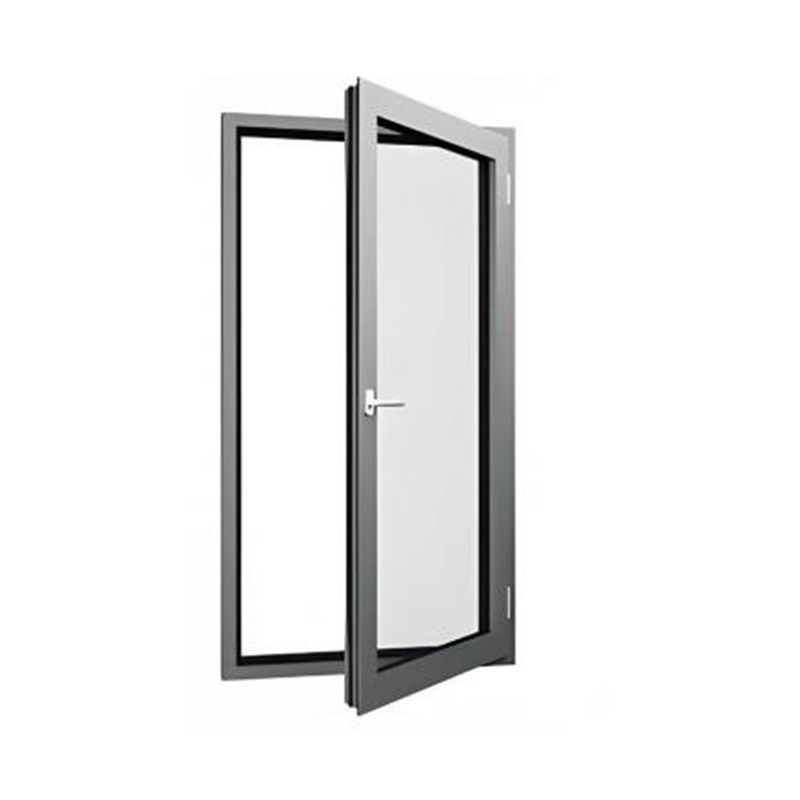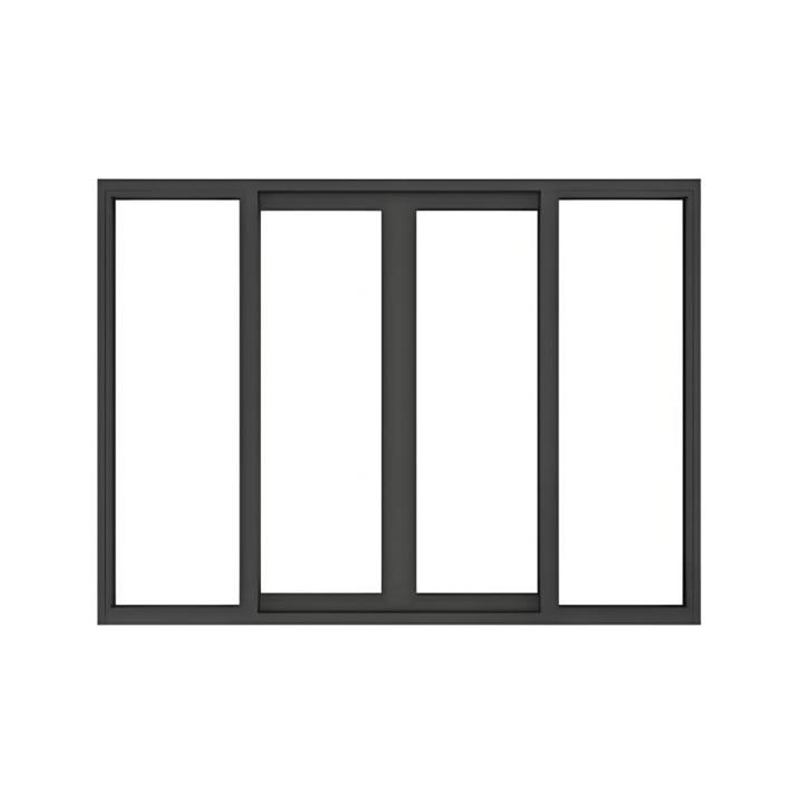How do sliding doors improve the visual coherence of indoor and outdoor spaces?
Release Time : 2025-05-28
In modern architectural design, sliding doors have become a popular choice for connecting indoor and outdoor spaces. They not only provide residents with a wide view and ample natural light, but also greatly enhance the visual coherence and fluidity of indoor and outdoor spaces.
1. Create seamless transition
Traditional solid doors often form a sense of separation visually, making the indoor and outdoor look like two completely independent spaces. The sliding door breaks this boundary with its transparent or translucent properties. When closed, the sliding door is almost invisible in the background, allowing people to see the outside world through it; when opened, the door leaf slides to one side, creating an opening with almost no obstacles, thus achieving a truly seamless transition. This design allows the indoor space to extend outward, as if integrated with the courtyard, balcony and even the scenery beyond, adding depth and breadth to the space.
2. Introducing natural light
Natural light is essential to creating a comfortable living environment. Sliding doors can maximize the introduction of daylight, reduce the need for artificial lighting, and also help improve the mental health of residents. Studies have shown that adequate natural light can improve a person's mental state, promote the synthesis of vitamin D, and help regulate circadian rhythms. By installing large sliding doors, you can ensure that the room is filled with bright sunlight, giving people a sense of warmth and vitality, even in winter when the days are shortest.
3. Enhance spatial perception
Using sliding doors can also change people's perception of the size of the space. Due to its transparent nature, it can blur the concept of walls, making the entire area look more open and spacious. This method is particularly effective in small-sized homes. For example, installing a sliding door between an open kitchen and a dining room can maintain the functional independence of the two while avoiding the sense of crampedness caused by the wall. In addition, this design can also be applied to occasions such as study rooms and living rooms that require a certain degree of privacy, providing the necessary isolation without sacrificing a sense of openness.
4. Strengthen landscape value
For those homes with beautiful courtyards or magnificent city skylines, sliding doors are undoubtedly one of the best tools to showcase these views. Through carefully designed location arrangements and size selections, outdoor beauty can be made part of the interior decoration. Whether it is the first rays of dawn in the morning pouring into the bedroom, or the afterglow of the setting sun shining on the living room floor in the evening, the sliding door can capture every wonderful moment, allowing people to enjoy the visual feast brought by nature anytime, anywhere.
5. Adapt to different climatic conditions
Although sliding doors are mainly used to increase lighting and visual transparency, with the advancement of technology, there are now many high-performance glass options available on the market, such as double-layer or triple-layer insulating glass, which have excellent thermal insulation and heat preservation properties. This means that even in cold winters or hot summers, sliding doors can effectively block the impact of external temperature changes on the indoor environment, ensuring comfort all year round. Therefore, regardless of the geographical location, you can rest assured to adopt this design to improve the quality of living.
6. Personalized customization solutions
In order to meet the specific needs of different users, many manufacturers provide a variety of sliding door solutions. In addition to standard transparent glass, there are also a variety of treatments such as frosted, printed, and colored to choose from. This not only enriches the appearance of the product, but also provides consumers with the possibility to adjust the degree of privacy according to their personal preferences. For example, on the side close to the street, you can choose a slightly shielded glass type to protect the privacy of the residents; in the relatively hidden backyard, you can choose a fully transparent style to enjoy the outdoor scenery.
In summary, the sliding door, with its unique material properties and flexible design possibilities, successfully solves the limitations of traditional doors and windows in space division, and brings a new perspective and experience to modern architecture. It is not just a simple passage, but also an important link between people and nature. By using the sliding door reasonably, you can not only optimize the spatial layout, but also significantly improve the quality of life, creating an ideal residence that is both practical and beautiful.
1. Create seamless transition
Traditional solid doors often form a sense of separation visually, making the indoor and outdoor look like two completely independent spaces. The sliding door breaks this boundary with its transparent or translucent properties. When closed, the sliding door is almost invisible in the background, allowing people to see the outside world through it; when opened, the door leaf slides to one side, creating an opening with almost no obstacles, thus achieving a truly seamless transition. This design allows the indoor space to extend outward, as if integrated with the courtyard, balcony and even the scenery beyond, adding depth and breadth to the space.
2. Introducing natural light
Natural light is essential to creating a comfortable living environment. Sliding doors can maximize the introduction of daylight, reduce the need for artificial lighting, and also help improve the mental health of residents. Studies have shown that adequate natural light can improve a person's mental state, promote the synthesis of vitamin D, and help regulate circadian rhythms. By installing large sliding doors, you can ensure that the room is filled with bright sunlight, giving people a sense of warmth and vitality, even in winter when the days are shortest.
3. Enhance spatial perception
Using sliding doors can also change people's perception of the size of the space. Due to its transparent nature, it can blur the concept of walls, making the entire area look more open and spacious. This method is particularly effective in small-sized homes. For example, installing a sliding door between an open kitchen and a dining room can maintain the functional independence of the two while avoiding the sense of crampedness caused by the wall. In addition, this design can also be applied to occasions such as study rooms and living rooms that require a certain degree of privacy, providing the necessary isolation without sacrificing a sense of openness.
4. Strengthen landscape value
For those homes with beautiful courtyards or magnificent city skylines, sliding doors are undoubtedly one of the best tools to showcase these views. Through carefully designed location arrangements and size selections, outdoor beauty can be made part of the interior decoration. Whether it is the first rays of dawn in the morning pouring into the bedroom, or the afterglow of the setting sun shining on the living room floor in the evening, the sliding door can capture every wonderful moment, allowing people to enjoy the visual feast brought by nature anytime, anywhere.
5. Adapt to different climatic conditions
Although sliding doors are mainly used to increase lighting and visual transparency, with the advancement of technology, there are now many high-performance glass options available on the market, such as double-layer or triple-layer insulating glass, which have excellent thermal insulation and heat preservation properties. This means that even in cold winters or hot summers, sliding doors can effectively block the impact of external temperature changes on the indoor environment, ensuring comfort all year round. Therefore, regardless of the geographical location, you can rest assured to adopt this design to improve the quality of living.
6. Personalized customization solutions
In order to meet the specific needs of different users, many manufacturers provide a variety of sliding door solutions. In addition to standard transparent glass, there are also a variety of treatments such as frosted, printed, and colored to choose from. This not only enriches the appearance of the product, but also provides consumers with the possibility to adjust the degree of privacy according to their personal preferences. For example, on the side close to the street, you can choose a slightly shielded glass type to protect the privacy of the residents; in the relatively hidden backyard, you can choose a fully transparent style to enjoy the outdoor scenery.
In summary, the sliding door, with its unique material properties and flexible design possibilities, successfully solves the limitations of traditional doors and windows in space division, and brings a new perspective and experience to modern architecture. It is not just a simple passage, but also an important link between people and nature. By using the sliding door reasonably, you can not only optimize the spatial layout, but also significantly improve the quality of life, creating an ideal residence that is both practical and beautiful.







